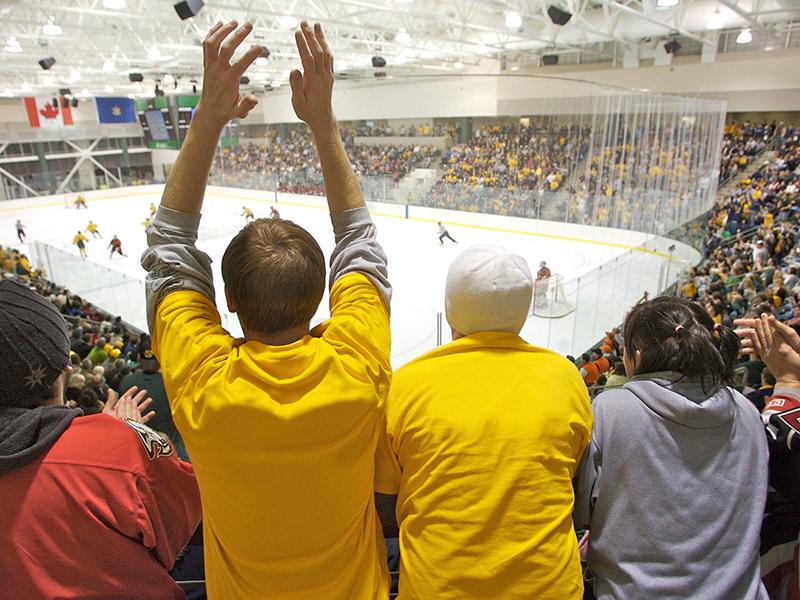SUNY Oswego has moved to enhance the experience of hearing-impaired spectators at ceremonies, performances and athletic events, installing audio-induction loops at several key locations.
Upgraded locations include the concourse level of Marano Campus Center arena and convocation hall, the newly updated Sheldon Hall ballroom, the soon-to-reopen Waterman Theatre and eventually in other venues on campus.
Also known as a hearing loop, the assistive listening system’s wire loop provides coverage for an area of a venue. The system allows audience members with many digital styles of hearing aids or with relatively new cochlear implants to connect to the loudspeaker system, pinpointing the sound’s source and minimizing the effect of reverberations and ambient noise.
Starr Wheeler, director of the college’s Office of Accessibility Resource Services, said she is excited that SUNY Oswego is moving ahead with hearing loops. “There are so many people with some type of hearing device,” she said. “Now we’re in a much better place for events.”
Hearing loops work magnetically through a receiver called a telecoil in an implant or hearing aid. The transmission will not interfere with older assistive listening devices, such as FM systems.
With proper signs to promote availability of a hearing loop, a spectator at commencement or an ice hockey game or a concert can activate a hearing aid’s or implant’s telecoil and connect, without bulky equipment or asking for help, according to Patrick Devendorf, assistant director of accessibility resource services and a member of the college’s Public Ceremonies Committee.
Of the 452 models of hearing aids listed from all major manufacturers in the 2014 edition of Consumer’s Guide to Hearing Aids, 323 (71.5 percent) were noted as having telecoils, according to the Hearing Loss Association of America.
The college’s Facilities Services has retained Hearing Loops Unlimited of Rochester to install the systems.




